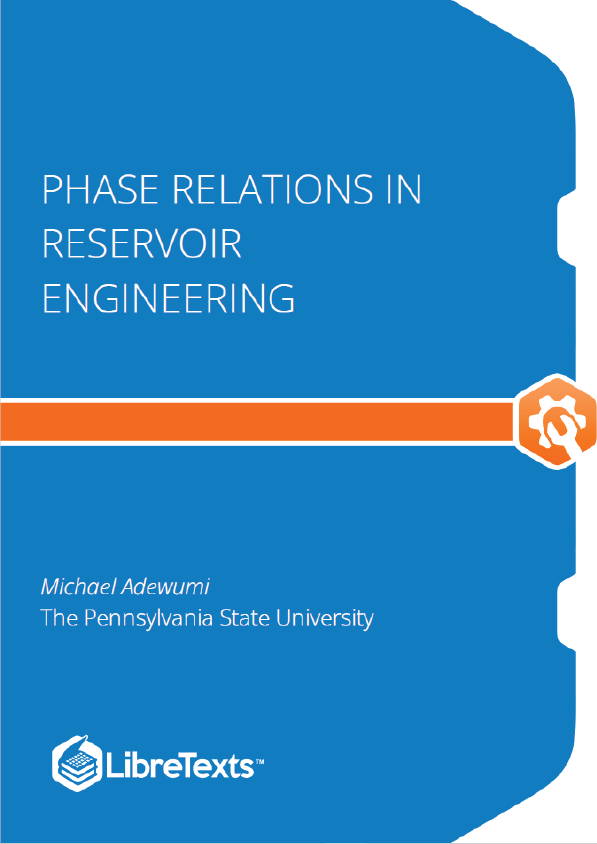1.1: Introduction
The basic essence of engineering is to harness the tremendous energy of the universe, in its latent or potent form, to resolve socioeconomic problems. Most often than not in the process, energy must be converted from its natural form into a form that is more amenable to human utilization. Petroleum and natural gas engineering is no different. It is a discipline focused on efficiently extracting the petroleum buried deep within the earth and getting it to where it is needed. The petroleum fluids of particular interest to the petroleum and natural gas engineers are crude oil and natural gas. The term crude oil is used broadly here as to encompass the different forms of petroleum liquids that are used for energy and other purposes.
Natural gas and crude oil are naturally occurring hydrocarbon mixtures; generally they are referred to as petroleum fluids. These fluids are found underground at elevated pressure and temperature conditions. Petroleum fluids are composed principally of hydrocarbons; various non-hydrocarbon components, such as nitrogen, carbon dioxide, and hydrogen sulfide, may also be present.
Producing, separating, transporting, and storing petroleum fluids are the primary responsibilities of a petroleum and natural gas engineer. Therefore, we make no mistake when we refer to natural gas and petroleum engineers as petroleum fluid engineers. These engineers deal with hydrocarbon fluids to make a living. As a consequence, they may very well be referred to as hydrocarbon fluid engineers. One cannot overemphasize the importance of the primary fluids — oil and natural gas — to the modern industrial society. Indeed, modern man’s reliance upon natural gas and crude oil as the primary source of energy is such that these fluids are absolutely critical to the operation of today’s industrial society. It is fair to assume that you, the reader, are interested in hydrocarbon fluids production.
At every stage of the petroleum exploration and production business, a hydrocarbon fluid engineer is needed. Hydrocarbon fluid engineers might find themselves dealing with activities such as reserve evaluations, drilling operations, reservoir analyses, production operations, and gas processing. They are, therefore, called upon to deal with a wide spectrum of activities, mostly dealing with fluid handling and the associated facilities.
Most of the fluid handling protocols require the engineer to know a priori how the fluids will behave under a wide range of pressure and temperature conditions, particularly in terms of their volumetric and thermophysical properties. For example, the engineers should know if the reservoir contains a dry gas, a wet gas, or a gas-condensate before they design the surface production facility. This is collectively termed fluid phase behavior. It is therefore, not an overstatement to say that a thorough understanding of hydrocarbon fluid phase behavior is essential for the work of a petroleum and natural gas engineer. Phase behavior has defining implications in petroleum and natural gas engineering processes. Pressure, volume, and temperature (PVT) relations are required in simulating reservoirs, evaluating reserves, forecasting production, designing production facilities, and designing gathering and transportation systems.
En route from a subsurface reservoir to man’s energy extracting combustion processes, a hydrocarbon molecule goes through various phase- and property-altering intermediate stages. These properties are crucial in designing and operating the processes efficiently and optimally. Phase behavior thermodynamics gives us the tools needed for gaining the desired understanding of how fluids behave at any of those stages.











